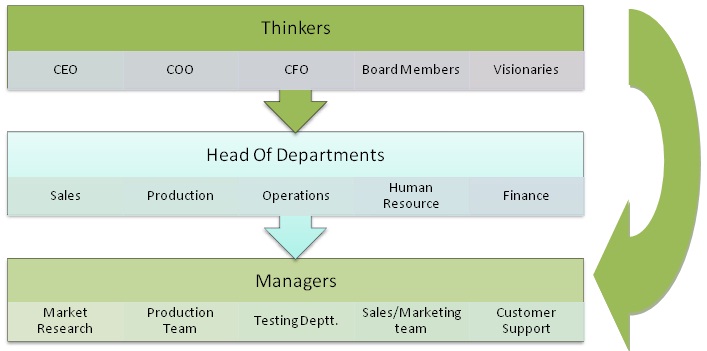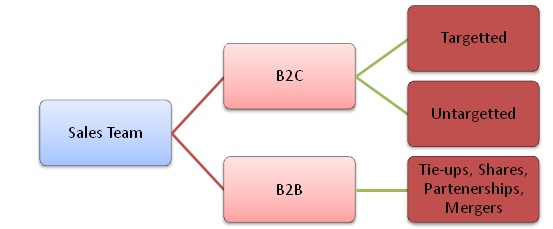Informal Communication in Organizations
How and when do colleagues interact ? How efficient is their communication ? What benefits can the co-workers derive out of the conversations they make with each other or with the customer ? How is that conversation beneficial to the organization ?
To sum up the answers to all these questions, we can say that “ communication “ forms the backbone of any organization and for the success of the same, the communication has to be efficient, informative, insightful and accurate. Many experts have been arguing about the importance of informal communication in organizations lately. Since ages corporates have stressed upon formal communication for all the interactions outside and within the organization. Lets take an example of a professional seeking an appointment with a potential customer. He writes an email quoting “ Please let us know at your convenience if this appointment is as per your schedule”. The informal way would’ve been “ If this doesn’t go as per your schedule, please let me know we’ll work out something else as per your convenience “. The formal way of communicating is rather cold, blunt and sounds like a totally business oriented transaction without soul. The latter one the other hand is warm, friendly and as if the sender is concerned and wants to connect emotionally to the receiver. So by obvious human nature of “wanna be touched” the response to the second email will be prompt and positive.

Communication happens in two stages for an organization. First is within the organization and second is with the outside world. Corporate giants like Google, Facebook, UNISON and many more are following this model of communication now. They have designed the offices in such a way that the employees get corners and places to sit and interact. Re-creational activities are promoted in organizations and lounges to relax, smoking rooms, gyms, game centers for techies, the couch and coffee concept and open areas to relax and innovate. All the initiatives promote the employees to discuss when at ease. It’s been found that human minds are at best of creativity when they are free from any pressure and are at leisure.
Free flow of information is one benefit of informal communication in organizations. People who may be introvert or shy in some procedure might let go of their grudges or problems during these conversations. Its is always motivating to be in such environment, where your colleagues interact with you with such warmth and humbleness. Enthusiasm takes a boost making the productivity rise. Informal communication reduces the mental distance that the colleagues feel with their seniors. Since transparency increases, the level of satisfaction out of a job also increases.

Let us now understand the working structure of an organization and how a product is actually conceived. The top level officials in a company are considered as the visionaries or the “ Thinkers “ Who actually conceive the idea or thought of a product. Which they must discuss within the same strata informally so as to gather the most creative and innovative ideas available in the grey matters. Then the organization must get in touch with the customers to co-create the basis of the thought. Brainstorming sessions, designs, prelims of the detailings must be laid down with the customer. These sessions have to be informal again for the same reason of gathering the maximum information.
Now when the product is completely conceived, it is then explained to the Heads along with the whole organization. This explanation must be informal again so as to transfer the thought accurately and convince the producers that they can interpret the idea into a product, where the customer feels valued. The heads then must lay down the economic outlook and deadlines “ formally “ to the managers, so as to ensure that the right amount of pressure and discipline is maintained in the organization.
The third stage is the stage of production where the informality must make its space again. Here the production team must be given full ownership of their ideas and creativity. They must be in constant co-creation mode along with the customer using continuous market research. The managers and the colleagues must ensure that the information is freely available and is fast enough. This phase utilizes the the precipitation of informal communication to the maximum.
The fourth stage is of the marketing team to communicate and sell the product. Here a mix of formal and informal communication must go hand in hand so as to communicate well and make an impact in the market. Since the product is already made by the customers, their trust and confidence is what the company has already acquired.

The final stage is where the monopoly of a company is built. The customer feedback and after sales service must be the most informal. The customer must feel valued and connected. Their should be continuous human touch and warm and friendly attitude must be ensured. The feedbacks and issues must be dealt with priority and should be conveyed to the production team with hundred percent transparency.
Throughout the process of product formation, right from the start till the final stage we have seen how important it is in today’s market scenario to build a relationship within the organization and with the customer. Relationships can never be sustained through cold blooded behaviours. Professor Mohan Sawhney very well explains that the marketing in the 21st century is much more beyond the 4P’s. Its about creating, communicating and delivering value to the customer. Now in all the processes he mentions, the customer must feel as if the company is making a product which totally according to his requirements. It should feel tailor made and should be unique in some terms, as the posessor must feel special with a top-notch after sales service. We will not go in the depth of marketing here, but what I want to convey here is that, to make a customer feel as a co-creator and valued. Human touch at all POIs is important with humble and warm interactions.

Market research is not only about knowing the real target customer and his demands, but it is also about communicating your product well. A company must connect emotionally to it’s customer and should try to develop a level of comfort. Knowing their views, convenience, connecting locally and culturally is important. Any conversation with the customer must be prolonged so as to dig deep. Nike Inc. is a major example for this state, their launch of Nike plus program actually is working on the same model. They are trying to connect to the people who are health concious and getting in touch with them through web apps, support website, running programmes, support programmes, training schedules. Through these activities Nike is actually getting to know the real demands of customer. Also they are developing a bond and making an important inevitable space in the daily schedule of the customer taking care of communicating their products also. These informal sessions, blogs and discussions are all classic examples of what I am trying to convey in this article.
Topic of debate is that informal communication has some drawbacks like improper documentation, errors in transfer, rumors, gossip, indiscipline and non reliability might be some of the areas of concern. But looking at the ROI on adopting such a model can be huge. Informal communication must be used in co-ordination with the formal procedures using a proper code of conduct and a set of values of a company. Like Google uses a certain set of values and rules for its employees. I am not trying to devalue the importance of formal procedures, but I am trying to convey that today the consumer is smart, rational and enlightened. The option of substitutes is high backed by the force of competition. So something out of the box is now the key to success.
Creating the right amount of pressure at the right place is the key to generate efficient productivity. The product out of that productivity has to be further woven into the life of a customer, because “What they see is more powerful than what you speak”.
This article has been authored by Sahil Sayal from LBSIM.
Image: FreeDigitalPhotos.net
Views expressed in the article are personal. The articles are for educational & academic purpose only, and have been uploaded by the MBA Skool Team.
If you are interested in writing articles for us, Submit Here
Share this Page on:
What is MBA Skool?About Us
MBA Skool is a Knowledge Resource for Management Students, Aspirants & Professionals.
Business Courses
Quizzes & Skills
Quizzes test your expertise in business and Skill tests evaluate your management traits
All Business Sections
Write for Us